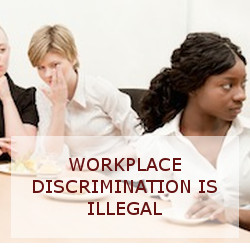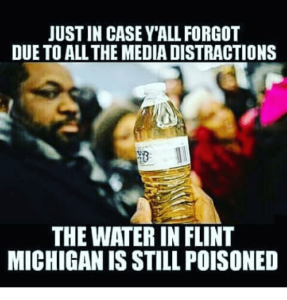The Curiously Brief Life of Integrated America
At its core, integration was a social policy designed to end the brutal racial caste system that locked Black people into the bottom rungs of American society. The policy was codified into law 53 years ago (yes, integration is that young) in the 1964 Civil Rights Act. That law banned race and other forms of discrimination in parks, restaurants, hotels, public accommodations and in the provision of government services.
The Civil Rights Act was followed by the Voting Rights Act in 1965 and the Fair Housing Act in 1968. Those laws prohibited discrimination in election politics and in the sale, rental or financing of property. Working together, these three anti-racism laws created a bridge over which America was supposed to transition from being defined by racial terror and inequities, into a society that worked to fulfill its promise of equality.
It was a complete 180 degree turn. One day, the 345 years of racist customs and practices which defined relations between Black and White people were legal. The next day, they kind of…weren’t.
Though far from perfect, the successes of integration are so prevalent today that we take many of them for granted. Like most Gen X youth, I have only known life in an integrated America and as a result, I had options my parents didn’t. Integration gave me access to schools, scholarships and job opportunities that were inaccessible to previous generations. Over the past 53 years, many began to mistakenly accept integration as a permanent feature of American life.
Talking about White supremacy is uncomfortable for most people and the history of slavery and racism is not taught in schools. So it’s easy to forget that integration was a response to more than three hundred years of explicitly racist national policies and laws. It can be hard to remember that in order to succeed, integration requires two key elements:
- A government that is committed to enforcing those anti-racism laws by punishing people and corporations who violate them; and
- White people’s willingness to obey anti-racism laws. They had to agree to keep their racism at home and out of the workplace, schools and public sector–or face the consequences of element one.
For 53 years, everything went more or less as expected. Black people and allies fought to enforce anti-racism laws. Racists and beneficiaries of racism fought to keep the status quo. But the country began the slow turn towards racial progress.
Until it stopped.
Element One: Government Commitment to Integration
In January 2017, openly White supremacist leadership moved into the White House and congress began systematically destroying every pillar that integration relies on to exist. The Department of Justice launched a full-frontal attack against voting rights and embraced extreme forms of voter suppression to stop Black people and people of color from voting. Then they abandoned the consent decrees that curb police violence in Black communities. The president began openly promoting police brutality and the people running the Civil Rights Division decided to sue colleges and universities who “discriminate” against White students by admitting students of color. Then 50% of Republicans stated their willingness to suspend elections to keep Trump in office right before Trump came out in support of White supremacists who killed a peaceful protester in Charlottesville. At the same time, they’ve started packing the courts with judges committed to voter suppression and other oppressive policies.
Republicans, who either agree with these policies or refuse to fight them, now control 32 out of the 50 state legislatures and 34 out of 50 governor positions across the country.
All of which means one simple, yet terrifying, thing: we no longer have an American government committed to enforcing anti-racism laws. In fact, the current administration is openly hostile to minority communities and is leading the charge away from social and racial justice policies as quickly as it can.
Integration element number one is done. It’s over.
That reality alone would put us in new territory, but all signs indicate that integration element two is also being obliterated in front of our very eyes.
Element Two: White People Afraid of being Racist in Public
Once integration began, companies with racist employment policies, landlords who refused to rent to Black people, and stores that refused to serve Black customers were increasingly investigated, sued and forced to pay a hefty price. If White co-workers let their racism step out of line on the job, Black employees could turn to anti-racism laws like the Civil Rights Act for some protection. Gradually, extreme workplace racism was eclipsed by “micro-aggressions,” comments or behaviors “that subtly and often unconsciously or unintentionally express a prejudiced attitude toward a member of a marginalized group.”
Once Bob in accounting realized that making “monkey-nigger” jokes in the break room could now get him fired, Bob became more discreet and only shared those jokes with the colleagues he believed would find them funny. When Susan in HR realized she and the company could be sued for employment discrimination when she threw away all of the applications submitted by Black people, Susan quickly learned about equal employment protection rules.
These rules were enforced by agencies like the Equal Employment Opportunity Commission (the EEOC), which interpreted them and defended victims from discrimination. But now, the EEOC is headed by Attorney General Jeffrey Beauregard Sessions, III, whose entire career specializes in implementing racist policy. So when you file a complaint about the discrimination you’re experiencing on the job, it’s being reviewed by people who could not care any less about your Black whining than they already do.
Bob and Susan are quickly realizing that the era of consequences for openly racist discrimination may be coming to an end. After the election, groups like the Southern Poverty Law Center reported that the workplace, universities and k-12 schools are the three places reporting the highest increases in the number of hate crimes and intimidation incidents. Yes, Black people: Bob, Susan and their children are reverting to openly racist behaviors–and getting away with it.
The delicate threads that were holding America’s integration experiment together have been ripped to shreds in less than one year of Trump’s presidency. Which tells you all you need to know about the myth of racial progress.
This Has Happened Before
The last time White people turned their backs on racial justice policies this quickly was at the end of “American Reconstruction.” This was the decade after the Civil War when the nation enacted polices to transition Black people from enslaved to fully free status. It only took twelve short years of Black freedom to convince White people that they had had enough of laws designed to help Black people heal from centuries of racial trauma. The northern troops that were in the south to protect Black people from the White people who had just fought a war to keep them enslaved, left. The post slavery laws that were supposed to protect and advance Black interests, were interpreted by the courts to mean nothing at all.
Black people were abandoned to defend themselves from racists who wrote laws that created the prison industrial complex and re-enslaved millions of Black people through convict leasing. Many call the unchecked violent racial terror Black people face during the years after emancipation “worse than slavery.” This time period lead to Jim Crow and it would take another eighty years before White people decided to give racial justice laws another chance. That’s how long it took to get that Civil Rights Act passed into law in 1964.
Now What?
White people’s ability to turn their backs on racial progress with lightning speed is well documented. America’s commitment to integration as a policy is coming to an end and Black people don’t have a lot of time to figure out what comes next.
Remember, White corporations and people only began supporting integration and diversity once there was a penalty for violating anti-racism laws.
What happens when every law we rely on to keep us safe from racial vigilante terror stops being enforced?
How many of your White neighbors harbor racial animosity, weapons and anger problems?
What happens when government agencies that provide clean water to Black communities, decide they can turn every Black community into Flint, Michigan?
Who will hire all of these brilliant Black graduates when White owned corporations no longer fear discrimination lawsuits for employing zero people of color?
Where will Black communities get access to financing when White owned banks no longer face lawsuits for providing Black people with toxic loans?
If cops could wild out the way they did under integration, what the hell does that mean for police-community relations today?
These are just a few of the many questions we must begin asking and answering in earnest. Our lives may depend on it.
Listen, life for Black people in integrated America has been challenging enough. But even the small advances we’ve made are under direct threat. Now, more than ever, we have to start coming up with some solutions to our community’s issues. Solutions that do not require White government or White people to support, co-sign, fund or consent to them. Because the last thing we can count on, is a legacy of integrated racial progress to keep us safe in the months and years to come.
**********************************
Lurie Daniel Favors is an author and attorney and the general counsel at a racial-justice law center in Brooklyn, N.Y. You can get your e-copy of her book, “Afro State of Mind: Memories of a Nappy Headed Black Girl” here! Follow her on Twitter, or Instagram, “like” Afro State of Mind on Facebook or catch up on her latest Youtube videos! Opinions expressed here belong to AfroStateOfMind(tm) only and do not represent those of any other institution.










Speak Your Mind